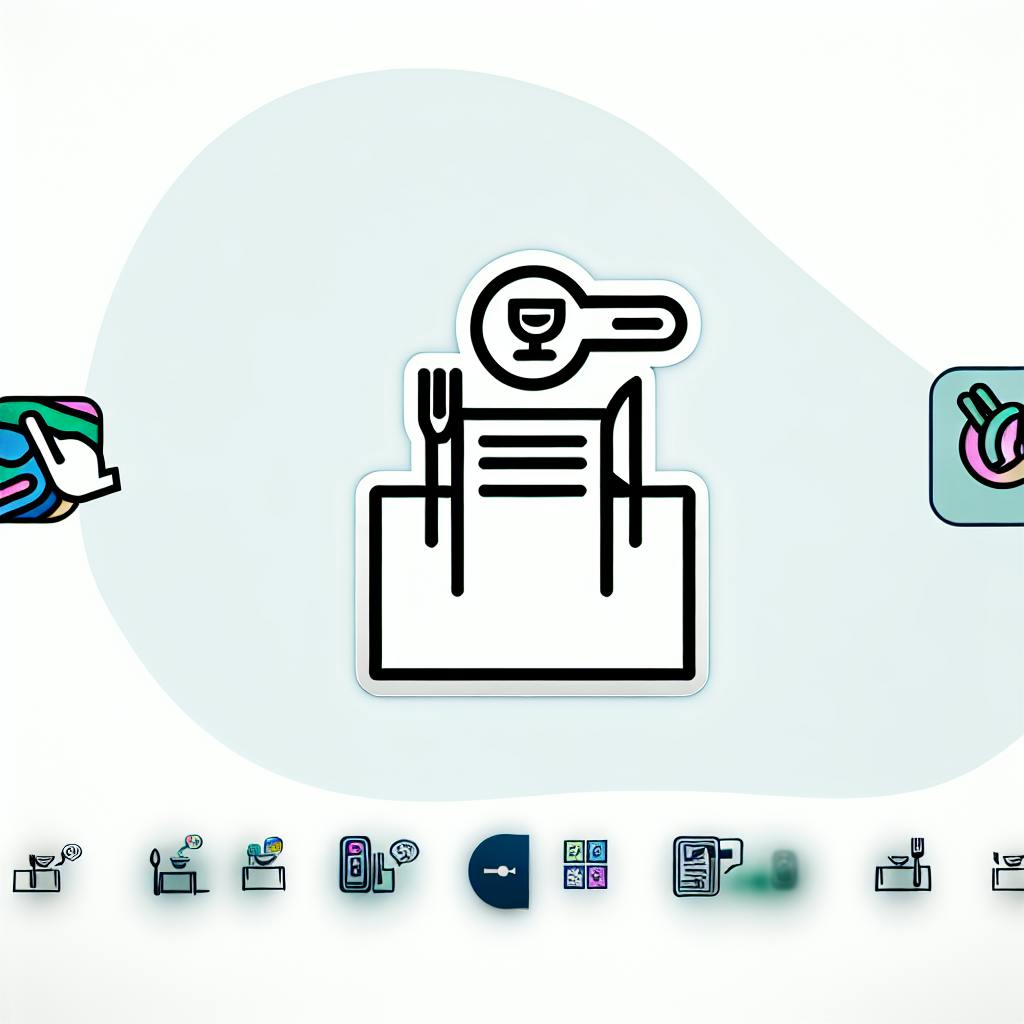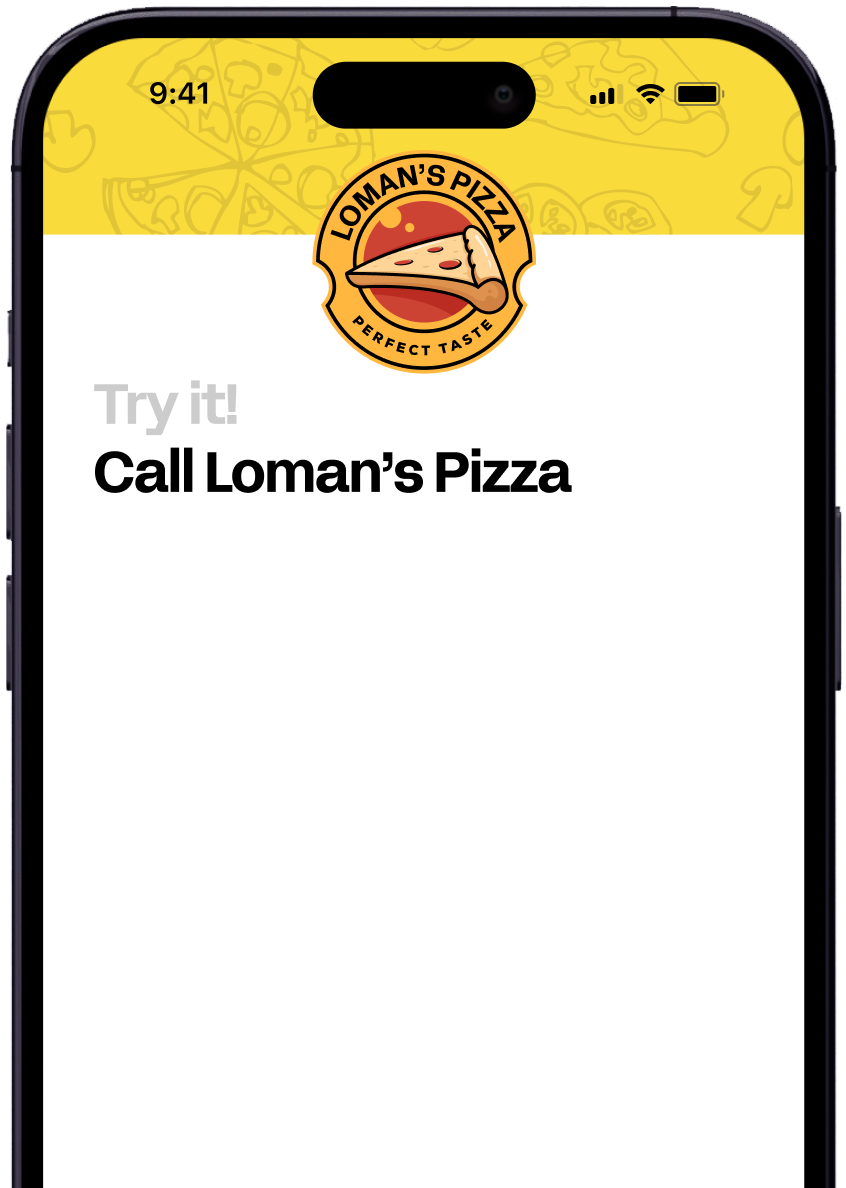June 10, 2024

This checklist guides restaurants on using AI technology to enhance accessibility and improve the dining experience for customers with disabilities. By adopting AI solutions like voice ordering, customized menus, and assistive technologies, restaurants can ensure inclusivity, build customer loyalty, and maintain legal compliance.
Key Benefits:
Implementation Steps:
By following this checklist, restaurants can create a welcoming and inclusive environment for all patrons, tap into a larger customer base, and build a reputation for prioritizing accessibility and exceptional service.
Take a close look at your restaurant's existing accessibility features and identify areas that need improvement.
Collect feedback from customers with disabilities to understand their experiences and pinpoint specific issues. You can do this by:
Evaluation MethodDescriptionPhysical Space CheckAssess wheelchair accessibility, door widths, restroom facilities, and potential obstacles.Digital Accessibility ReviewEvaluate website and mobile app for accessibility features like screen readers and high contrast mode.Customer SurveysCollect feedback from customers with disabilities through surveys or feedback forms.Customer InterviewsConduct in-person or phone interviews with customers who have disabilities.Online Review AnalysisReview online reviews and feedback from customers with disabilities.Disability Organization PartnershipsPartner with disability organizations or advocacy groups to gather insights.
Use voice-activated AI systems to let customers browse menus, place orders, and navigate the restaurant. The AI should work with different accents, speech patterns, and speech difficulties. Give clear instructions on using the voice AI. This helps customers with mobility or dexterity issues order and move around easily.
For example, AI voice ordering like Wendy's FreshAI can simplify drive-thru orders, ensuring accuracy and reducing wait times. Voice AI also assists visually impaired customers to independently browse menus and order.
Use AI to create personalized, accessible menus based on customers' dietary needs, allergies, and accessibility requirements. Offer menus in large print, braille, audio, and digital formats with clear descriptions, ingredients, and allergens. Let customers input their preferences, and have the AI filter out unsuitable dishes.
AI menus can provide gluten-free, vegan, and other dietary options, with detailed ingredient and preparation information. This helps customers with food allergies order safely and confidently.
Use AI-powered assistive technologies like text-to-speech and sign language videos for visually and hearing-impaired customers. Ensure the AI accurately conveys menu information, order details, and other relevant information.
For example, text-to-speech AI can read out menu items for visually impaired customers, while sign language videos facilitate communication for hearing-impaired customers. These enhance the dining experience for those with vision or hearing impairments.
Develop AI training modules to teach staff best practices for serving customers with disabilities. Use AI simulations for realistic scenarios and interactive training. Continuously update the modules with the latest accessibility guidelines and industry best practices.
AI training equips staff with the knowledge and skills to provide exceptional service to customers with disabilities, ensuring a welcoming and inclusive environment for all.
AI TechnologyDescriptionVoice AIVoice-activated systems for menu browsing, ordering, and navigation.AI MenusPersonalized, accessible menus based on dietary needs and accessibility requirements.Assistive AIText-to-speech and sign language video options for visually and hearing-impaired customers.AI TrainingInteractive training modules for staff on serving customers with disabilities.
Perform regular accessibility tests and audits to ensure the AI solutions meet standards and guidelines. Include customers with disabilities in the testing process to get their feedback and insights. Continuously monitor and evaluate the restaurant's accessibility performance, making improvements as needed.
This involves:
Gather data on how customers interact with the AI accessibility solutions, such as usage patterns, feedback, and satisfaction levels. Analyze the data to find areas for improvement and optimize the AI solutions for better accessibility and customer experience.
This includes:
ActivityDescriptionRegular Accessibility AuditsConduct regular audits to identify areas for improvement in accessibility.Customer Involvement in TestingInclude customers with disabilities in testing to gather feedback and insights.Continuous MonitoringContinuously monitor and evaluate the restaurant's accessibility performance.ImprovementsMake improvements to the AI solutions and restaurant operations as necessary.Data CollectionCollect data on customer interactions with the AI accessibility solutions.Data AnalysisAnalyze the data to identify areas for improvement.Solution OptimizationOptimize the AI solutions for better accessibility and customer experience.Data-Driven ImprovementsUse data to inform improvements to restaurant operations and accessibility features.
As we wrap up this checklist for using AI to improve accessibility in restaurants, it's crucial to highlight the importance of prioritizing inclusion and an excellent customer experience. By adopting AI technology, restaurant owners can create a more welcoming environment for all patrons, regardless of their abilities or disabilities.
Following this checklist will not only help restaurants comply with accessibility laws but also tap into a larger customer base, build a reputation for inclusivity, and boost overall customer satisfaction. Remember, accessibility is not just a legal obligation; it's a smart business move.
For more guidance and resources on implementing AI accessibility solutions, we recommend exploring organizations like the National Restaurant Association, the Disability Rights Education and Defense Fund, and the World Wide Web Consortium (W3C). These organizations provide valuable resources and expertise to help restaurants navigate the process of creating a more inclusive and accessible dining experience.
Key TakeawaysPrioritize inclusion and an excellent customer experienceAdopt AI technology to create a welcoming environment for allComply with accessibility laws and tap into a larger customer baseBuild a reputation for inclusivity and boost customer satisfactionExplore resources from organizations like the National Restaurant Association, Disability Rights Education and Defense Fund, and W3C

Enter your information in the form to receive a call from Loman and place an order like a customer would!